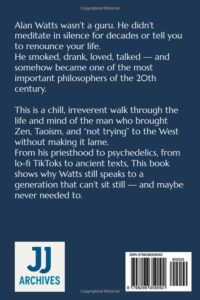There’s a particular kind of exhaustion that comes from seeing what others don’t. Not in a mystical sense, but in the deeply human way of reading the room with uncomfortable accuracy—catching the micro-expression that betrays someone’s true feelings, sensing the tension beneath polite conversation, intuiting the unspoken dynamics that shape every interaction around you.
If you’re a highly perceptive person, you know exactly what I’m talking about. You’ve probably been told it’s a gift. You might have even believed it for a while. But somewhere along the way, you discovered the truth: this kind of perception comes with a price tag that no one mentions.
The Gift That Keeps On Taking
Most people move through the world with a blessed kind of unconsciousness. They take things at face value. They believe what people say. They don’t notice the discrepancy between someone’s words and their body language, between the smile and the sadness in their eyes, between what a group claims to value and what it actually rewards.
This isn’t stupidity—it’s a form of protection. It’s the psychological equivalent of having a decent immune system that filters out most of the noise so you can function. These people live in what might be called “beautiful unconsciousness”—a state where you can participate in social rituals without constantly analyzing their subtext, where you can enjoy surface-level interactions without the weight of everything beneath them.
But you? You don’t have that filter. Or perhaps more accurately, your filter is set to maximum sensitivity. You’re picking up signals that most people’s brains automatically discard as irrelevant. You’re processing layers of reality that others simply don’t register.
And while this might sound like having a superpower, it’s more like having superhearing in a world that’s constantly screaming.
The Four Hidden Dangers
1. The Isolation of Living in a Different Reality
The first danger is the most insidious because it happens so gradually you barely notice it. You’re in conversations where everyone else seems perfectly comfortable, perfectly convinced that what’s happening on the surface is all that’s happening. Meanwhile, you’re watching the actual dynamics play out like a second movie projected over the first.
You see that your friend’s new relationship isn’t actually as perfect as they claim—you caught the control in their partner’s tone, the way they talk over them, the subtle diminishment disguised as care. You notice that your workplace’s culture of “openness” is really an elaborate performance, that certain people can never be challenged, that speaking up is encouraged right until the moment someone actually does it.
The more clearly you perceive, the more alone you become. Not because you want to be separate, but because you’re literally experiencing a different reality than the people around you. You’re the person watching a thriller while everyone else thinks they’re in a romantic comedy. The isolation isn’t chosen—it’s structural.
And the worst part? You can’t even fully explain it. How do you tell someone about patterns you’re seeing when they can’t see patterns at all? How do you discuss the subtext when they’re still convinced the text is the whole story?
2. The Impossible Choice: Truth or Self
This leads directly to the second danger: the excruciating double bind between speaking your truth and preserving yourself.
When you see something clearly—a toxic dynamic, a looming problem, a fundamental dishonesty in how a situation is being framed—you face an impossible choice. Do you say something, or do you stay silent?
If you speak up, you become the problem. You’re told you’re too negative, too sensitive, too analytical, too intense. You’re reading too much into things. You’re bringing drama where there was none. You’re a troublemaker, a boat-rocker, someone who can’t just let things be. Never mind that you’re right—being right about uncomfortable truths is rarely rewarded. The messenger gets shot with remarkable consistency.
But if you stay silent, something even more dangerous happens: you lose contact with yourself. Every time you nod along with a narrative you know is false, every time you pretend not to see what you clearly see, every time you invalidate your own perception to keep the peace, a piece of your self-trust erodes. You become a stranger to yourself, someone who knows the truth but has agreed to live in the lie.
Both options exact a profound cost. Speak and be punished. Stay silent and disappear.
3. Becoming the Target
The third danger emerges when your perception threatens someone else’s carefully constructed reality. People have enormous investments in their narratives—about themselves, their relationships, their choices, their organizations. Your clear seeing can feel like an attack on these narratives, even when you’re not trying to attack anything.
When someone doesn’t want to see the truth, they often deal with their discomfort by making your perception the problem. It’s not that the relationship is unhealthy—it’s that you’re too judgmental. It’s not that the workplace is dysfunctional—it’s that you have a bad attitude. It’s not that the family system is broken—it’s that you’re ungrateful, difficult, the troublemaker who won’t let things be.
This is the classic “shoot the messenger” dynamic, but it’s more personal and more painful than that phrase suggests. You’re not just delivering bad news—your very way of seeing becomes threatening. Your perception itself is treated as the wound, rather than as the accurate description of a wound that already exists.
And because you can often see this dynamic happening too—see them needing to make you the problem, see their inability to tolerate what you’re reflecting—it compounds the isolation. You’re alone with both the original truth and the truth about why they can’t see it.
4. The Loss of Self in the Sea of Others
The fourth danger is perhaps the most subtle and the most identity-eroding: when you spend your life absorbing and processing other people’s emotional states and hidden realities, you can lose track of what’s actually yours.
Highly perceptive people are often highly empathic—you don’t just see what others are feeling, you feel it too. You walk into a room and immediately sense the anxiety, the resentment, the unspoken conflict. You absorb emotional atmospheres like a sponge. Over time, you become so skilled at tuning into others that you forget to tune into yourself.
You might find yourself feeling inexplicably anxious, only to realize hours later that you were picking up someone else’s stress. You might feel suddenly sad without knowing why, then remember you spent the afternoon with someone who was secretly grieving. The boundaries between your emotional experience and others’ become so porous that you stop knowing where they end and you begin.
This isn’t just exhausting—it’s a form of self-erasure. When you’re constantly holding space for everyone else’s hidden feelings, when do you hold space for your own? When you’re always processing what others aren’t saying, when do you listen to what you need to say?
The Wisdom Hidden in the Danger
Here’s what took me years to understand: the danger of high perception isn’t in the seeing itself. It’s in the compulsion to fix what you see.
When you can see beneath surfaces, there’s an almost irresistible urge to do something about it. To help, to heal, to correct, to intervene, to make others see what you see. This compulsion is understandable—how can you watch someone hurting themselves with eyes open? How can you witness dysfunction and just… let it be?
But this is where the curse lives. Not in the perception, but in the belief that every truth perceived demands a response, that every problem visible requires your intervention, that seeing clearly obligates you to make others see clearly too.
The wisdom—and it’s hard-won wisdom—is understanding that not everything you perceive requires your action. People will see what they’re ready to see, change when they’re ready to change, wake up when they’re ready to wake up. And they will do so on their timeline, not yours, regardless of how clearly you can see what needs to change.
This isn’t about becoming callous or indifferent. It’s about recognizing that your perception is yours to hold, not yours to force onto others. It’s about understanding that you can see clearly without being consumed by what you see.
Transforming the Curse Into Sustainable Clarity
So how do you live with high perception without being destroyed by it? How do you keep the gift without being crushed by its weight?
Create Conscious Distance
The first practice is learning to maintain conscious distance from what you perceive. This doesn’t mean denial or shutting down your perception—that doesn’t work, and it costs you connection with yourself. Instead, it means recognizing that seeing something doesn’t mean you have to carry it.
Think of it like being a weather station rather than the weather itself. You can register the storm without becoming the storm. You can note the tension without absorbing it into your body. You can see the dysfunction without making it your responsibility to fix.
This requires developing what might be called “witness consciousness”—the ability to observe clearly while maintaining your center. It’s a muscle that strengthens with practice, but it takes time and intention to build.
Prioritize Time Alone
Highly perceptive people need alone time not as a luxury but as a necessity. When you’re constantly processing multiple layers of social reality, you need time to settle, to let all that information and emotion you’ve absorbed find its way out of your system.
Solitude gives you the space to distinguish what’s yours from what you’ve picked up from others. It’s where you can finally hear your own thoughts without the constant input of everyone else’s unspoken feelings. It’s where you can reconnect with your own emotional baseline.
This isn’t about becoming a hermit—it’s about regular practices of solitude that allow you to maintain your sense of self while engaging with the world. Think of it as essential maintenance, like sleep or food. You’re not avoiding the world; you’re making it possible to engage with the world sustainably.
Trust Your Perception Without Being Controlled By It
This is the most sophisticated practice and perhaps the hardest to explain. It means simultaneously honoring your perception—trusting that what you see is real and valid—while not being controlled by the compulsion to act on every truth you perceive.
It’s holding the paradox: Yes, I see this clearly. And also, I don’t have to do anything about it right now. Or maybe ever. The truth can exist without requiring my intervention.
This is different from passive acceptance or learned helplessness. It’s an active choice about where to direct your energy. Some truths you perceive will call for action—and you’ll know which ones because they’ll directly impact your life or wellbeing. Others are simply information, data about the world, things you notice but don’t need to fix.
The wisdom is in discernment—knowing the difference between perception that calls for action and perception that’s simply part of seeing clearly.
Find Your People
Finally, and this might be the most practically important: find other people who also see clearly. The isolation of high perception is real, but it’s not absolute. There are others who live in this reality, who see beneath surfaces, who understand what you’re talking about without long explanations.
These relationships are golden because they allow you to be fully yourself. You don’t have to dumb down your perception or pretend not to see what you see. You can discuss the subtext openly. You can acknowledge patterns without being dismissed. You can be understood.
This doesn’t mean you need to abandon everyone who doesn’t share your level of perception—that would be its own kind of isolation. But having even a few relationships where you can be fully seen, where your way of seeing is recognized and valued rather than pathologized, makes the isolation of the broader world much more bearable.
Living Awake in a Sleeping World
In the end, being highly perceptive means you’re awake in ways that can be uncomfortable, lonely, and demanding. You can’t unsee what you see. You can’t unknow what you know. The question isn’t whether to be perceptive—if you’re reading this, that ship has sailed—but how to live with your perception in a way that doesn’t destroy you.
The goal isn’t to wake everyone else up. It’s not to make them see what you see, or to fix what they’re not ready to acknowledge, or to force truth into spaces that aren’t prepared for it.
The goal is simpler and harder: to remain awake yourself and live peacefully with what you see.
This means developing the capacity to hold truth without needing to weaponize it or immediately act on it. It means creating a life that honors your perception while maintaining healthy boundaries around what you take on. It means finding the people and spaces where your way of seeing is an asset rather than a liability.
The gift and the curse are the same thing. High perception will always come with costs. But with enough wisdom, enough practice, and enough self-compassion, those costs become manageable. You learn to see clearly without being consumed by the seeing. You learn to live in truth without demanding that everyone else join you there.
And sometimes—in the right moments, with the right people, in the right circumstances—your clear seeing becomes exactly what’s needed. Not because you forced it on anyone, but because you were present, awake, and available when someone else was finally ready to see.
That’s when the gift reveals itself fully—not as something that sets you apart, but as something that allows you to meet others in the depth where real connection becomes possible.
The danger is real. But so is the possibility. And learning to navigate between them? That’s the journey of a lifetime.
Hey there! We hope you love our fitness programs and the products we recommend. Just so you know, Symku Blog is reader-supported. When you buy through links on our site, we may earn an affiliate commission at no extra cost to you. It helps us keep the lights on. Thanks.
Disclaimer: The information provided in this discussion is for general informational and educational purposes only. It is not intended as medical or professional advice. Only a qualified health professional can determine what practices are suitable for your individual needs and abilities.


